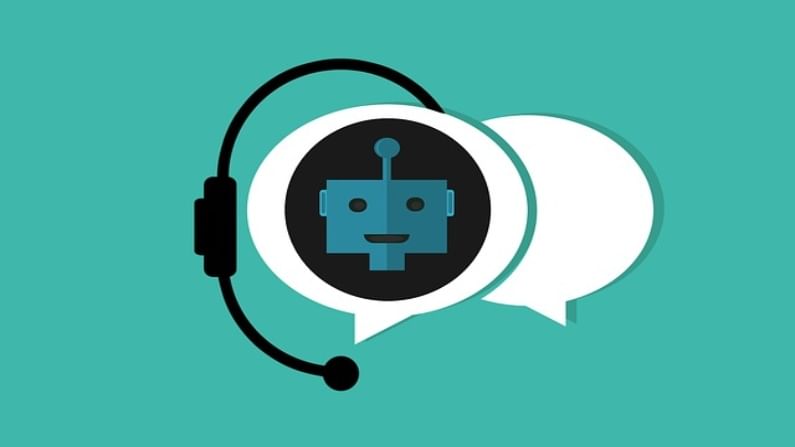Have chatbots improved customer experience in banking?
While it was gradual, customers are now more comfortable interacting with chatbots as well as transacting through them.

Since the outbreak of Covid-19 pandemic, people were forced to migrate online as most banks shuttered their branches in the wake of a nationwide lockdown. This is when banks geared up to further enhance and expand their digital and remote services to improve the quality of their services. The majoritarian view suggests the digital migration will not only continue in the near future but will, in fact, be promoted more aggressively.
Now, banks are looking to elevate existing digital communication medium like online chat for round the clock customer ease. While the primary purpose of a chatbot is to help customers meet their banking needs, this virtual assistant can be catalytic in boosting the credibility of banks. In absence of human assistance and help, chatbots are looked upto as a smart substitute in the banking industry today.
Banks have adopted chatbots for quality service
Anita Pai, chief operating officer at Yes Bank said that chatbots provide quick and easy access for customers to find the information they need while also ensuring customer data security. The bank’s chatbot is programmed to answer over 4,000 banking related queries.
“At Yes Bank, to ensure that chatbot banking is safe, secure and convenient across all our platforms – our website, WhatsApp or Facebook, we use conversational data encryption, multi-factor authentication and behavior analytics. For maintaining confidentiality of customer requests, we have a transaction integrity mechanism in place: every transaction goes through three security checks,” she stated.
Any request raised by a Yes Bank customer has its hash encrypted signature. If this matches the Bank-generated signature, the request is moved forward to the second round of check, where its time stamp is verified after which it moves to the final round of check.
“In order to enhance transaction security for customers logged in to any of our chatbot services, we have placed limits on how long their session time remains valid. These multiple layers of security do not interfere with the seamless conversational banking experience we offer to our customers,” Pai added.
Services provided by chatbots
Banking is one of those sectors that can’t afford to mess with safety and security of customer data. The industry witnesses thousands of financial transactions on a daily basis. This requires careful monitoring and assistance to avoid any kind of frauds. Customers have several queries and doubts regarding their money. They interact with the bank and demand assurance. Chatbots can prove to be of great assistance here.
“At Yes Bank, our AI chatbot, ‘YES ROBOT’ enables easy 24/7 personal banking on the bank’s website, WhatsApp channel as well as Facebook Messenger. It combines natural language processing (NLP) and AI to assist customers with a host of financial and non-financial transactions without human intervention, yet with a human-like touch,” Pai informed.
With round-the-clock access to customers for various loan services like balance outstanding, three months’ transactions, welcome certificate, tax certificate, home loans and repayment schedule, customers can benefit from the virtual assitance in ways more than one. Not just regular banking services, chatbots uses an intuitive loan eligibility calculator to evaluate customer’s unique requirements and provides them with an indicative loan amount too.
“Customers can chat in their natural language. Even with human errors, the chatbot can identify the intent of the user with over 90% accuracy. Updating of email and PAN, viewing deposit details and latest transactions, checking account balance, requesting a cheque book and account statement is now feasible. It also provides real-time assistance in locating nearest ATM and Branch through GPS,” Pai pointed.
How to ensure customer safety?
One often hears that customer’s digital safety is ensured through end-to-end encryption. Other than the sender and the receiver, no third party can view, read or intercept the information. But what is the exact process for customer verification in online banking?
“To verify the identity of users updating their PAN through the chatbot, a User Identity Authentication is done by unique login credentials and OTP validation. After a three-step security check, the PAN holder’s name and details are passed on to the National Securities Depository Limited (NSDL, under SEBI’s jurisdiction) to assess data match. Only upon validation, followed by updation of the details in Bank records, the customer is informed on their registered email and phone number,” Pai explained.
Omnichannel presence of banks
Accelerated digital adoption has raised customer expectations for a seamless banking experience across platforms – for banks this means creation of uniform touchpoints for customers so they can move between channels seamlessly, regardless of the mode of engagement. This is where AI-enabled chatbots have been successful.
The future of technology looks sparkling. The banking sector doesn’t want to be left behind in making the most out of this opportunity. The ability and potential of AI is still partly discovered. There is so much to explore in terms of sheer possibilities. Today we’re getting used to contactless banking. The future may bring a sea of changes that can shrink the entire banking structure into your tiny electrionic screens.